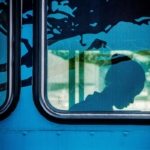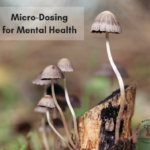Medicine is an art form; each chart is a blank canvas on which we document the interconnection between ourselves and our patient. Through medicine we allow patients to publish their own autobiographies, as we ghost-write it, pen to paper, in our medical charts.
Healing, like art, can be expressed through an infinite number of mediums. Canadian Gabrielle Roy once said, “Could we ever know each other in the slightest without the arts?” Mere day-to-day conversation rarely deepens into the beauty of experience and we must find other mediums through which to pass on our vital messages: this is me and my body, this is what we see, feel, touch and are touched by. Acknowledge us. Accept us. Appreciate us. Through medicine, if we get in touch with our inner artist, we may allow ourselves to know about our patients in the slightest.
Art is challenging, it stimulates a part of our brain that often makes us uncomfortable: a part that thrives in interconnectivity, in poetry, in raw experience, unrefined by the logical, starch-collared narrative of our thoughts. Art is the antithesis of perfection. Like a good homeopathic intake, a successful attempt at creating art may turn out completely different from what you planned and it achieves its means nonetheless. Art, as communication, can’t be planned because what flows from your hands, lips, thoughts and heart possess a spontaneous energy, like the unveiling of time itself. When we engage in a conversation with the artist, whether in the patient visit, reading, painting or viewing works in a gallery, we acknowledge that there is a connection between us that, if nurtured and attended to, can open us up to healing.
So I sit, with the great Irish book before me. It’s thickness menacing and the voice of the book store clerk, 6 years ago, ringing in my ears, “are you buying this to read for fun?” With its accompanying eye-roll. I bought it anyway, eyes downcast and then left it for years gathering dust on the shelf, the book so celebrated in literary circles. Can I bear witness to 700 pages, nary a page-break in sight? Sitting with it, as so many others have, feeling the narrative enter through my eyes, float through the brain and then dissipate as the new waves of smoke pour in, paying attention to the experience, the one-way communication I share with Joyce, like sitting down with the man across from a cup of earl grey. A feat worth bragging about, a narrative worth hearing, but also a practice, for the hidden Joyces who venture into my practice, pouring forth their stories that challenge, sans Coles Notes, needing a witness in order to complete the cycle of communicative expression – in order to feel acknowledged, accepted and appreciated, to open the gates of healing.
You might also like:
The Art and Practice of Narrative Medicine
Naturopathic Summer Read: Cutting For Stone






